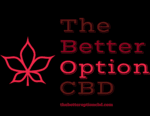Understanding the differences between sucrose, glucose, and fructose is essential for comprehending their roles in the body, their sources, and their impact on health. In this comprehensive guide, we’ll delve into the distinctions between these three types of sugars, their chemical structures, how they’re metabolized, their sources in the diet, and their effects on health.
What is Sucrose?
Sucrose, commonly known as table sugar, is a disaccharide composed of one molecule of glucose and one molecule of fructose. It is the most common form of sugar found in the human diet and is extracted from sugarcane or sugar beets. Sucrose is used as a sweetener in a wide range of foods and beverages, including baked goods, desserts, and soft drinks.
What is Glucose?
Glucose, often referred to as blood sugar, is a monosaccharide and the primary source of energy for the body’s cells. It is found naturally in many carbohydrate-rich foods, including fruits, vegetables, grains, and legumes. Glucose is also produced by the body through the breakdown of carbohydrates during digestion and is transported in the bloodstream to cells where it is used for energy.
What is Fructose?
Fructose is a monosaccharide found naturally in fruits, vegetables, and honey. It is also a component of sucrose, along with glucose. Fructose is sweeter than glucose and sucrose, which makes it a popular sweetener in processed foods and beverages. High-fructose corn syrup (HFCS), a sweetener derived from corn starch, is a common source of fructose in the Western diet.
Chemical Structures
Sucrose
Sucrose is a disaccharide composed of one molecule of glucose and one molecule of fructose linked together by a glycosidic bond.
Glucose
Glucose is a monosaccharide with a six-carbon structure (hexose) and is commonly represented as C6H12O6.
Fructose
Fructose is also a monosaccharide with a six-carbon structure (hexose) and is chemically similar to glucose but has a different arrangement of atoms.
Metabolism
Sucrose
When consumed, sucrose is broken down into its constituent monosaccharides, glucose, and fructose, by enzymes in the digestive tract. These monosaccharides are then absorbed into the bloodstream and transported to cells throughout the body, where they are metabolized for energy.
Glucose
Glucose is absorbed directly into the bloodstream and used by cells for energy production. It can also be stored in the liver and muscles as glycogen for later use.
Fructose
Fructose is primarily metabolized in the liver, where it is converted into glucose or stored as glycogen. Unlike glucose, which can be readily utilized by all cells in the body, fructose metabolism is limited to the liver.
Dietary Sources
Sucrose:
ucrose is found naturally in fruits, vegetables, and honey, as well as in processed foods and beverages sweetened with table sugar.
Glucose
Glucose is found in many carbohydrate-rich foods, including fruits, vegetables, grains, and legumes. It is also present in starchy foods such as bread, rice, and pasta.
Fructose
Fructose is naturally present in fruits, vegetables, and honey. It is also a component of sucrose and is found in high-fructose corn syrup (HFCS), a sweetener used in many processed foods and beverages.
Effects on Health
Sucrose
Consuming excessive amounts of sucrose, especially in the form of sugary beverages and processed foods, has been linked to an increased risk of obesity, type 2 diabetes, heart disease, and other metabolic disorders.
Glucose
Glucose is the body’s primary source of energy and is essential for normal physiological function. However, consistently high blood glucose levels, as seen in diabetes, can lead to complications such as nerve damage, kidney disease, and cardiovascular disease.
Fructose
While fructose is naturally occurring in fruits and vegetables and is generally considered safe when consumed in moderation, excessive intake of fructose from sources like high-fructose corn syrup has been associated with obesity, insulin resistance, fatty liver disease, and other metabolic disorders.
FAQs
Is glucose the same as sugar?
Glucose is a type of sugar, but not all sugars are glucose. Glucose is a monosaccharide and is often referred to as blood sugar due to its role as the primary source of energy for the body’s cells.
What foods are high in fructose?
Fruits, vegetables, and honey are natural sources of fructose. Processed foods and beverages sweetened with high-fructose corn syrup (HFCS) also contain high levels of fructose.
Is fructose healthier than glucose?
Fructose and glucose are both sugars, and their health effects depend on factors such as overall diet, lifestyle, and individual health status. Consuming excessive amounts of either fructose or glucose can have negative health consequences, so moderation is key.
What is high-fructose corn syrup (HFCS)?
High-fructose corn syrup (HFCS) is a sweetener derived from corn starch and is commonly used in processed foods and beverages. It consists of varying proportions of glucose and fructose and is used as a less expensive alternative to sucrose (table sugar).
Are natural sources of sugar healthier than added sugars?
Natural sources of sugar, such as fruits and vegetables, also provide essential nutrients like fiber, vitamins, and minerals, making them healthier choices compared to foods and beverages with added sugars. However, consuming excessive amounts of natural sugars can still contribute to weight gain and other health issues if not consumed in moderation.
Is sucrose bad for you?
Sucrose, like other sugars, can be part of a healthy diet when consumed in moderation. However, excessive intake of sucrose, especially from sugary beverages and processed foods, can contribute to weight gain, obesity, and metabolic disorders.
- 7 Things to Know About the 500-Calorie Diet - May 1, 2024
- Sucrose vs Glucose vs Fructose: What’s the Difference? - May 1, 2024
- Benefits of Cucumber Water: 7 Reasons to Start Sipping - May 1, 2024

